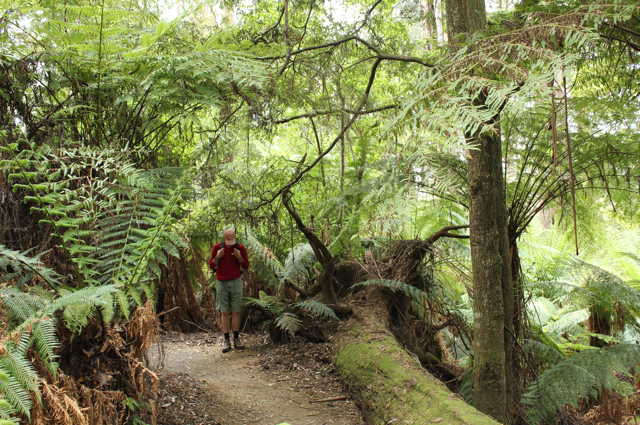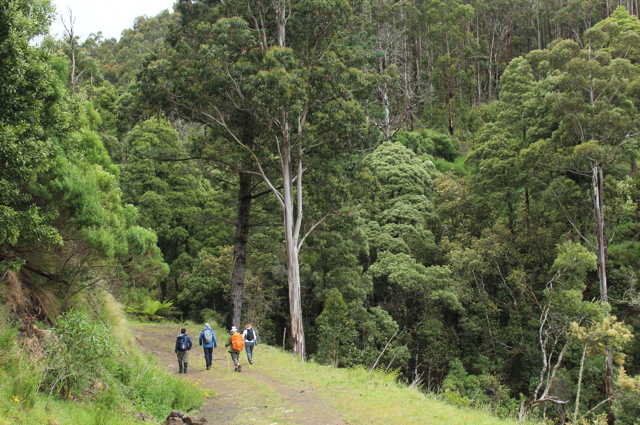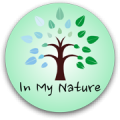On a cold and gloomy Sunday morning, my group of friends stood in a circle under a gum tree, looking at me with slight curiosity. I had led many hikes with them in various beautiful places in Victoria. But Forest Therapy?
In my introduction, I explained that Forest Therapy derives from the Japanese “Shinrin-yoku;” the practice of taking luxurious walks in forested areas for the purpose of enhancing health, wellness, and happiness. This way of mobile meditation has been recognized officially by the Japanese Government since the 1980s and its benefits continue to be studied around the world.
Although we are inspired by the Japanese practice, our use of the terms “Forest Therapy” and Shinrin-yoku” do not mean to follow a specifically Japanese practice. Rather, we mean spending time in nature in a way that invites healing interactions. There is a long tradition of this in many cultures throughout the world.

Learn to let the land and its messages penetrate into your mind and heart more deeply
Evidence-based benefits
Studies have found that when people strolled through a wooded area, their feelings of stress, anxiety or anger had decreased and levels of the stress hormone cortisol plummeted almost 16 percent more than when they walked in an urban environment. Even after just 15 minutes of walking, subjects’ blood pressure showed a marked improvement. Yet, one of the biggest benefits may derive from breathing so-called phytoncides, antimicrobial substances emitted by trees and plants. Women who spent two to four hours in a forest on two consecutive days saw a dramatic reduction of stress hormones, and a nearly 40 percent surge in the activity of cancer-fighting white blood cells. Unsurprisingly, research has also shown that the emotions of pleasure and happiness are elevated during these walks.
Why do I need a Guide to experience these benefits?
One of the easiest ways to benefit from the medicine of the forest is simply taking a contemplative walk through the woods to reconnect with nature. Studies have shown that this leads to decreased stress, natural mood elevation, improved perceptions of energy or vigor and even a stronger immune system.
Isn’t this is just confirming what we all intuitively know? Get outside, engage with nature and you will feel healthier and more connected?
Yes and no! As an experienced hiker, I have a noticeable improvement in my wellbeing when out on a hike. I feel less stressed, get sick less often, and find a spiritual calm that keeps my optimism brimming through the seasons.
However, I derive many more benefits during a forest therapy guided walk by learning “how to be present”, how to slow down in nature and really engage my senses. I practice regularly how to interact mindfully with nature, through specific activities and other core routines which are designed deliberately to slow us down and widen our senses. Consequently, I began to develop a reciprocal relationship with the forest. I have never felt happier, more positive and alive!

This is where the real magic happens. Slowing down in a natural setting, and being guided derives the maximum and long-lasting benefits. Being led by an INFTA-Certfied Forest Therapy Guide has been documented to lower stress and blood pressure levels, impart a sharper cognitive focus, lessen depression all while boosting one’s immune system for weeks after.
The benefits of a guided walk
We all experience a ‘nature connection’ at some point in our lives. But as our ‘busyness’ gets in the way, how do we recalibrate the senses and refresh from the effects of our digital lives and an overabundance of screen time?

The practice of Shinrin-yoku has a specific intention to connect with nature in a healing way to deepen our relationship with nature, and in the exchange of health benefits between humans and the more-than-human-world.
The benefits of these contemplative walks and reconnecting with nature in forests have been medically researched for many years. A guided walk helps participants to slow down and open their senses. You perceive more deeply the nuances of the constant stream of communications rampant in any natural setting. You will also learn to let the land and its messages penetrate into our minds and hearts more deeply.
Forest Therapy guided walks are suited to anybody, irrespective of age or physicality. The gentle, slow walks of no more than one or two kilometers on even, flat surfaces, offer a simple remedy for stress, letting go of time and busyness. The walk takes about three hours, with no more than a dozen people, culminating – just like in the original Japanese tradition – with a tea ceremony.
The language of the Shinrin-yoku guided walk is open, inviting and gentle. We all experience nature in a myriad of ways, and these walks allow us to leave our structured, hurried, directed everyday life to make deeper and more meaningful connections through nature with ourselves.
Walkers develop a deeper sense of relationship to nature just from taking time to notice what’s around. It’s all about letting go the busyness of life, taking time to notice all the living beings around; how the sunlight falls on a petal, listening to a flowing creek, or the pleasure of wind against your skin. Little effort is required towards a cognitive experience throughout the walk – the door is rather opened to experience nature in a vivid, pleasurable, calming way.
When can I join a guided Forest Therapy walk close to Melbourne?
A whole series of Shinrin-yoku guided walks will begin in the New Year. Please, check our Facebook page for the latest updates!
I invite you to join me to get outdoors and experience the wonderful feeling of being present in nature. To enjoy “bush time” in our magnificent forests. To explore Shinrin-yoku. To take time to listen, breathe, be quiet and still. To enjoy the benefits of bonding in nature, together.

Recent Comments